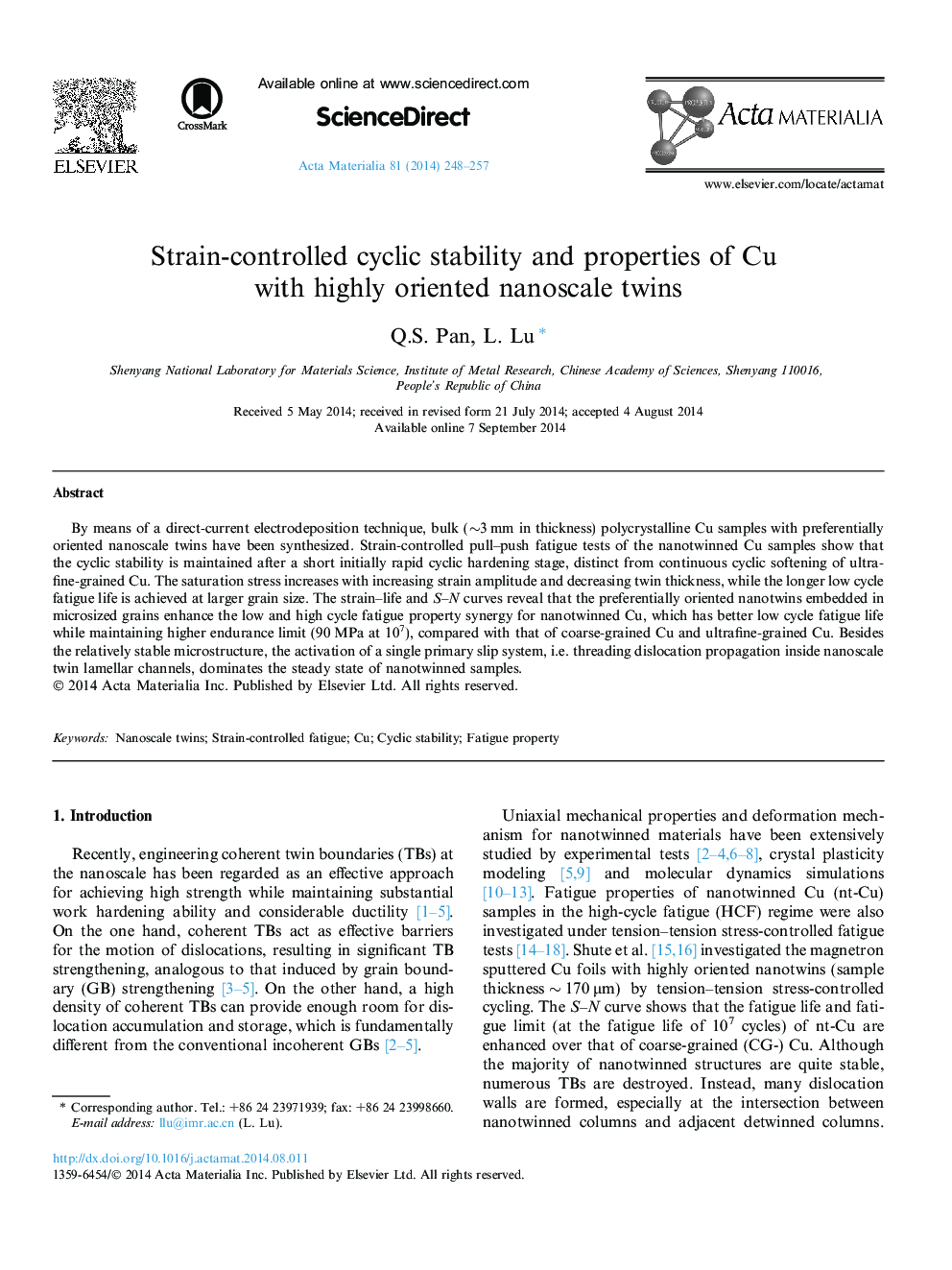| Article ID | Journal | Published Year | Pages | File Type |
|---|---|---|---|---|
| 1445616 | Acta Materialia | 2014 | 10 Pages |
By means of a direct-current electrodeposition technique, bulk (∼3 mm in thickness) polycrystalline Cu samples with preferentially oriented nanoscale twins have been synthesized. Strain-controlled pull–push fatigue tests of the nanotwinned Cu samples show that the cyclic stability is maintained after a short initially rapid cyclic hardening stage, distinct from continuous cyclic softening of ultrafine-grained Cu. The saturation stress increases with increasing strain amplitude and decreasing twin thickness, while the longer low cycle fatigue life is achieved at larger grain size. The strain–life and S–N curves reveal that the preferentially oriented nanotwins embedded in microsized grains enhance the low and high cycle fatigue property synergy for nanotwinned Cu, which has better low cycle fatigue life while maintaining higher endurance limit (90 MPa at 107), compared with that of coarse-grained Cu and ultrafine-grained Cu. Besides the relatively stable microstructure, the activation of a single primary slip system, i.e. threading dislocation propagation inside nanoscale twin lamellar channels, dominates the steady state of nanotwinned samples.
